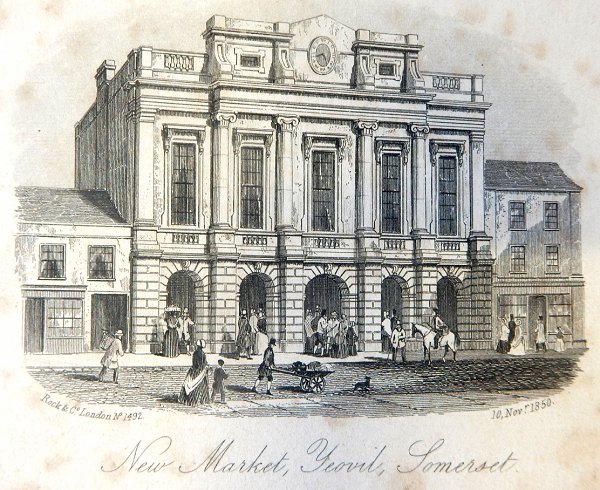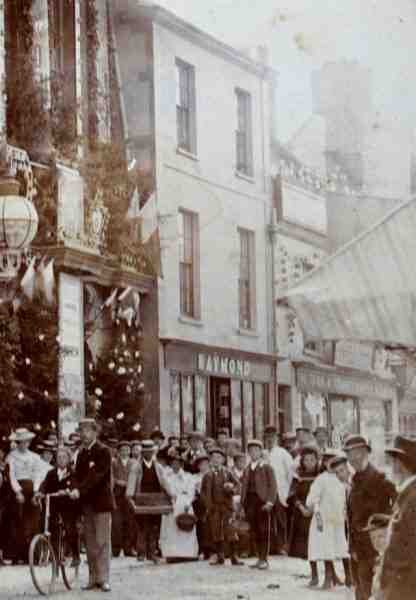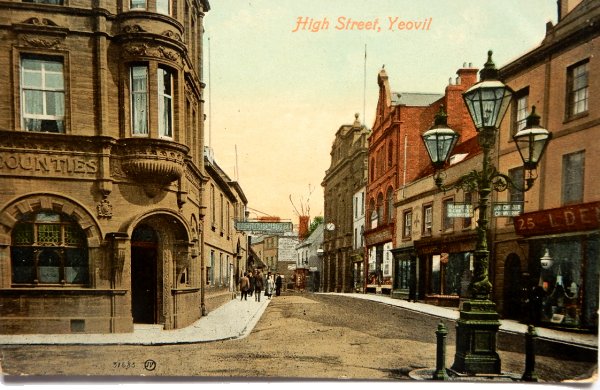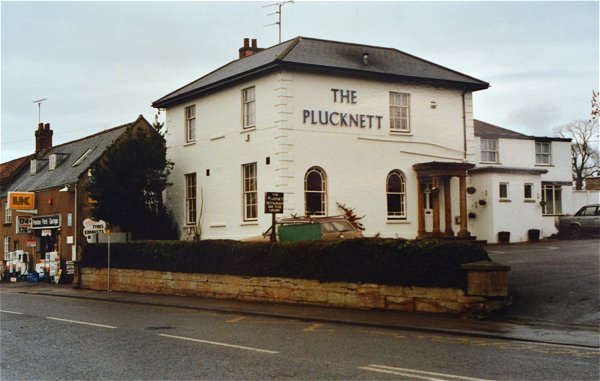yeovil people
Henry Stacey Raymond
China & Glassware Dealer of High Street
Henry Stacey Raymond was born in Bloomsbury, Middlesex, in 1850. His mother, Sarah, had been born in Poole, Dorset, in 1823. His father is unknown - could he have been the older Henry Raymond of Yeovil? (see below). Very little is known of his early life simply because of the large number of men with the same name.
It is not known when Henry first came to Yeovil, but certainly by 1871 he was operating a china and glassware shop at 21 High Street, immediately next door to the Town Hall. In the 1871 census the shop was occupied by 65-year old bachelor, also called Henry Raymond - presumably a close relation - possibly even Henry's father? The older Henry described his occupation as a china merchant and had been trading in the High Street premises from at least 1851 when Henry Snr was noted as an investor in the South Western Railway Company. It appears that young Henry succeeded to the business in this year. What happened to the older Henry is unclear, but he presumably retired, moved away or died.
Henry was listed in the 1881 census as a 31-year old china dealer. With him, and listed as a visitor, was 26-year old Matilda Martha Johnson, of Holt, Dorset, who gave her occupation as a milliner. From the 1891 census, we know that Matilda was a cousin of Henry's.
In the 1891 census, still at 21 High Street, Henry gave his occupation as a master china dealer. Living with him in addition to Matilda and two more cousins, Alfred Johnson and Elsie Bond, was his widowed mother 68-year old Sarah Raymond and a domestic servant. In the summer of 1897, Henry and Matilda (1856-1939) were married at Yeovil.
|
In the 1891 edition of 'Where to Buy' Henry Raymond's business was given the following description -
Mr H
Raymond,
In describing the commercial character and resources of the Borough one is likely to feel occasionally in a rather peculiar mental difficulty. Looking at it as it stands one would undoubtedly say it was a very handsome modern town, with attractive shops and spacious warehouses, but it presents the appearance of having been in that condition for a considerable period. There is none of that incongruity and imperfectness about it that is generally associated with places that have recently wakened up to an ambitious modern career. And yet when we read the history of the town we find that a comparatively short while ago it presented a very different spectacle. As a matter of fact the Borough rose up from the dust and ashes, or lath and plaster, in which it was contented to repose, and, having determined to adopt modern attire, completely laid aside its old vesture, and hence at the present day the tout ensemble is consistent and harmonious.
Mr
Vickery,
in his
sketch,
says -
"The
Post
Office
was kept
for many
years by
Mr
Gabriel
Baker,
who was
postmaster,
and
lived on
the
premises
now
occupied
by Mr
Raymond,
as a
china
shop -
then a
low pent
house,
with a
thatched
roof.
[actually
it was
tile and
stone
slates]"
It seems
an
extraordinary
transformation
from the
"low
pent
house
with a
thatched
roof" to
the
present
handsome
modern
establishment,
with
commanding
frontage
and
spacious,
well-lighted
ware-rooms,
but the
change
is
characteristic.
The Mr
Raymond
referred
to in
the
above
quotation
was the
father
of the
present
proprietor,
succeeding
Mr
Glyde,
in the
year
1846.
Doubtless
the
"china
shop,"
referred
to by
Vickery,
was at
the
beginning
carried
on on a
less
extensive
scale
than it
is
to-day,
for the
tastes
of the
public
were not
so well
developed
as they
are at
present,
and Mr
Raymond's
patrons
were not
so
numerous.
However,
by
patient
energy
and
untiring
industry,
Mr
Raymond
created
a
wonderful
improvement
in the
popular
taste in
respect
to this
one
branch,
and by
supplying
artistic
wares at
a
moderate
price,
established
a
valuable
connection.
|
By the time of the 1901 census, Henry had retired. He and Matilda had moved to Preston House, Preston Plucknett (later the Plucknett Hotel).
Henry Raymond died in Yeovil during the autumn of 1903. He was 52 years old. Matilda died in Bridport, Dorset, in 1939, aged 84.
gallery/h2>

A celebratory
sketch dated
1850 of the Town
Hall and Market
House opened the
previous year.
The shop at
extreme right
would become the
shop premises of
Henry Raymond.

Henry Raymond's shop photographed in 1897, as crowds gather in High Street to celebrate Queen Victoria's Diamond Jubilee.

From my
collection
AA hand-coloured postcard of High Street, this one postmarked 1910. The three-storey white building, just right of centre, had been the china and glassware shop of Henry Raymond.

Courtesy of
Chris Rendell
-
This photograph
features in my
book 'Yeovil
From Old
Photographs'
The Plucknett, formerly Preston House and the home of Henry Raymond. Photographed in 1989.